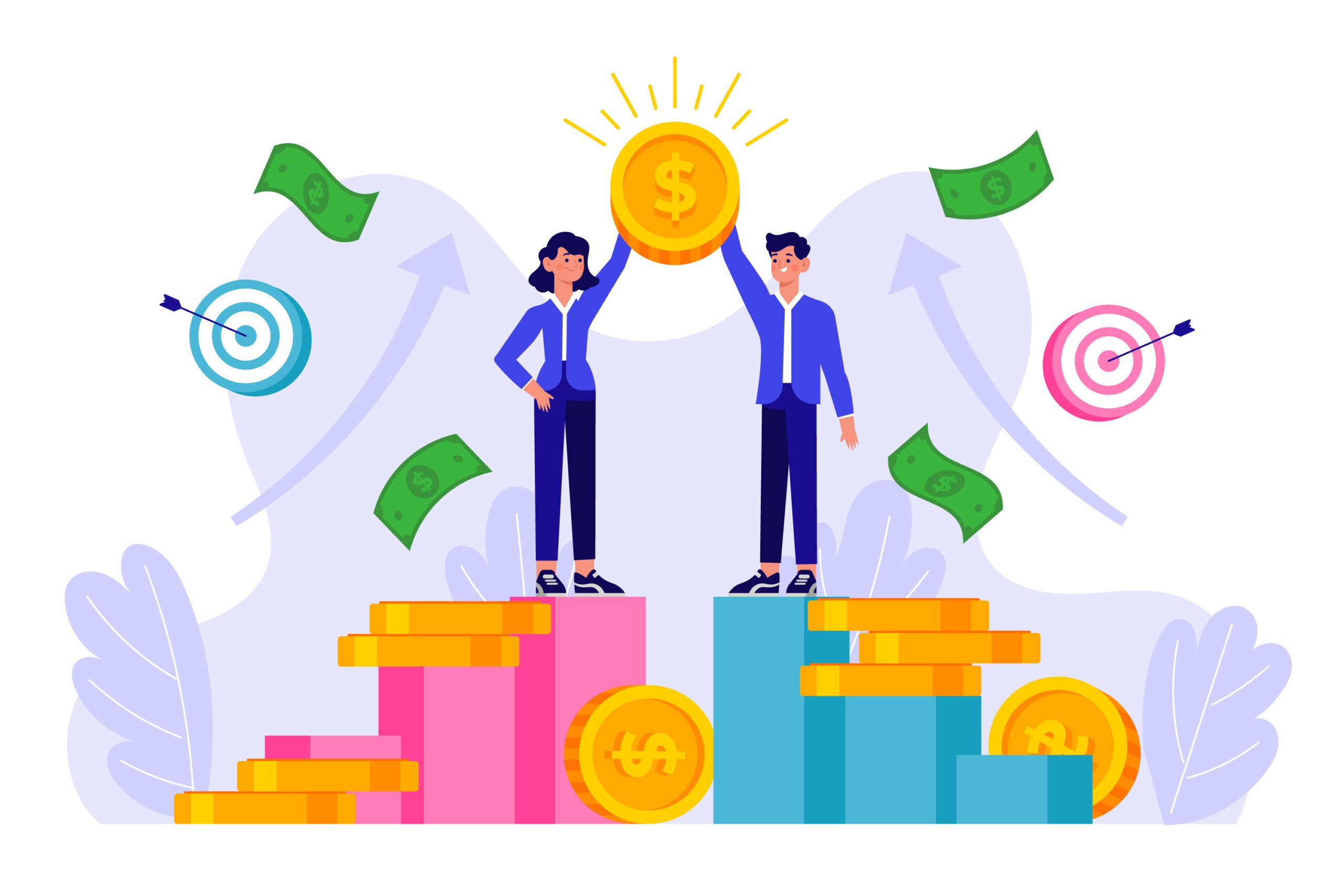As organizations compete in hyper-competitive markets, a static sales crediting model no longer cuts it. Sales teams work across geographies, products, and customer segments. How do...
Given the constantly evolving nature of business, to sustain it, it ultimately necessitates the use of innovation. More often than not, those that are sitting at the top of the financial leaderboards are those which are more adept at finding the best ways to boost their bottom line. In such a scenario, one of the most fruitful avenues an organization can explore is through finding ways to improve revenue per customer. The most effective route to do that is by designing the right plan of incentives for the salespeople, which ensures that sales activities align with company goals, leading to higher sales, greater customer satisfaction, and subsequently higher revenue as a whole. Presented here is an article which drills deeper into the ways organizations can use such an incentive plan to increase revenue. Along with real-world examples, frequently asked questions and answers are also provided to shed light through every relevant angle.
The Importance of the Right Incentive Plan
Creating a sales incentive plan that works is essential for inspiring your sales teams to work at their best. By tying the interests of your sales force to your company’s revenue goals, you’ll help make sure everyone’s working towards the same common goals. An appropriate sales incentive plan that provides the right motivation and rewards can inspire your team to perform beyond expectations and positively impact your company’s success.
Key Components of an Effective Incentive Plan
- Clear Objectives: The cornerstone of any effective incentive programme is clear, measurable objectives. These should align with your overall business objectives, for example increasing revenue per customer, gaining market share, or improving customer retention.
- Target Setting: Whether you’re forming high-school volleyball teams or setting sales quotas, you must set realistic but stretching targets. However, the targets must be matched to sales roles and market conditions. In other words, a realistic target for a ten-year veteran in a mature market is different from a reasonable target for a new hire in a developing market.
- A third decisive factor is performance metrics: the specific measures of success, such as those often referred to as the sales funnel or pipeline – including sales volume, profit margins, number of new customers acquired, and upselling or cross-selling rates.
- Incentive Structure: The incentive structure should be designed to maximise motivation. In some cases, this will require an optimal mix of financial incentives (commissions, bonuses) and non-financial incentives (e.g., recognition, opportunities for fast-track career advancement).
Communication and transparency Communication Communicating the incentive plan is critically important. Sales team needs to be done up front, and communication needs to continue. As an example, if everyone is able to see each other’s compensation income, it can stabilise the system and encourage consistency.
All incentive plans should be reviewed on a regular basis, and then adjusted to match changing conditions and make sure they’re still accomplishing what owners want.
Strategies to Increase Revenue Per Customer Through Incentive Plans
1.Up-selling and Cross-Selling
Spur sales teams to up- and cross-sell. Organisations can increase the amount of money they get from a customer by incentivising revenue-driving behaviours such as up-selling and cross-selling. A software company might want to incentivise its sales reps to sell a premium support package or extra modules to current clients.
E.g., A SaaS company increased the commission rate for sales reps who sold premium features and services. They also offered a quarterly bonus for the most successful reps, based on the percentage increase in premium features adoption. Within six months, the company reached a 20 per cent increase in revenue per customer.
2.Customer Retention Programs
Incentivise sales teams to keep customers with ongoing pay-outs. It’s much cheaper to keep a customer than to attract one, and loyal customers tend to spend more every time. A telco might want to base its bonus schemes on contract renewal rates or the longevity of customer relationships.
For example, a telecoms company introduced an incentive system based on customer retention. Sales reps received bonuses if they renewed contracts or aggregated volume from existing accounts, and consequently customer retention rose and repeat purchases increased by 15 per cent.
3.Personalized Sales Approaches
Incentives: construct incentives that support sales personalisation. Salespeople who know what the customer wants, and have a personalised offer ready, often close more deals and have more satisfied customers. A luxury car dealership can offer rewards to its salespeople for preparing personalised sales plans that result in big-dollar purchases.
For example: an auto dealership used custom sales plans for customers who’d bought a luxury car to drive improved satisfaction and a 10 per cent increase in average transaction value. They incentivised sales reps with bonus payments for creating effective sales plans.
4.Customer Feedback and Improvement
Incorporate customer feedback into the incentive structure. Incentivise things such as positive customer comments and/or high Net Promoter Scores (NPS), a popular survey that measures implied likelihood to recommend a company. One retail chain might put extra bonuses on the line for sales team members who regularly receive glowing feedback from customers.
For instance, a regional retailer developed a NPS-based incentive plan that rewarded front-line sales staff with bonus pay based on positive customer reviews and high NPS scores. As a result, the retailer saw a 10-point increase in NPS satisfaction scores and an increase of 12 per cent in average spend per shopper.
5.Bundling Products and Services
Second, design incentives around the purchase of bundled products or services. Bundling creates the three opportunities – enhancing the average transaction value, leading to the purchase of complements and encouraging wider penetration. For example, in a home-improvement store, sales forces might be encouraged to sell kitchen-remodel packages that include cabinets, counters and appliances.
For example, consider an incentive plan that a home improvement retailer implemented for its sales reps. The company designed the plan so that reps were compensated if they sold bundles of kitchen remodel packages. The targeted incentive led to a 25 per cent increase in sales of bundled products, and a greater average revenue per head.
Frequently Asked Questions (FAQs)
1.How can an incentive plan help increase revenue per customer?
A compensation plan encourages the salesforce to spend their time on the activities that will deliver high revenue: upselling, cross-selling and customer retention. If compensation is tied to the behaviours that move the revenue needle, then the organisation will benefit from higher sales per customer. For instance, commissions on sale of premium products encourage reps to sell the higher-margin item, leading to a direct revenue boost.
Key metrics should focus on the activities that drive top line, such as units sold, gross profit margin, average selling price, customer retention, and upsell/cross-sell ratios. For example, an increase in average order size can be traced to an upselling incentive.
2.How often should incentive plans be reviewed and adjusted?
They should also be reviewed often – at least once a quarter. When performance data becomes available and the marketplace changes, organisations need to have the flexibility to revisit their incentive plans and update targets and rewards whenever they deem the underlying business goals have shifted. For example, if a new competitor enters the market, modifying the incentive plan to spend more time on client retention might be warranted.
3.What are some common pitfalls to avoid when designing an incentive plan?
Other pitfalls include: having unrealistic targets; using the wrong metrics; poor transparency; and ignoring non-financial incentives. Overly lofty financial targets can end up demotivating sales teams, while the wrong metrics to capture sales activity might not trigger the right behaviour. Transparency is also crucial for trust. Non-financial incentives are often more motivating, too: public praise, career development opportunities and high-quality management are frequently more motivating than an additional fee at the same level.
4.How can technology aid in the implementation of an incentive plan?
It can simplify the application of incentives – for example, through sales performance management (SPM) software, which can automate tracking and reporting capabilities for incentives, as well as establishing a more accurate and transparent distribution process. This duty of care extends to plan design for individuals Not only can these types of systems speed up incentive applications and help businesses with tracking, but they can also help improve the administration of incentives and ensure conditions are met. Furthermore, customer-relation management (CRM) systems can be used to empower staff with better insights into buying behaviour, so they understand how incentives will influence customer reactions. As an example, CRM data can provide helpful insight into cross-selling opportunities – sales staff can see directly in the customer’s record that a sales target could be easily reached by offering customers what they don’t have, and then they can provide an incentive for that process as well.
The revenue per customer through proper incentive plan is the key strategy in sales business that helps increase the revenue through sales effort in line with organisational objectives. By means of pushing sales for upselling, cross selling, customer retention, individualised sales strategy, and product pooling, revenue of organisation can be obtained in a high volume. Regular review of plan by a constant changing of environment and customers, is a crucial part that individuals in this sector can be considers as motivators at the same time job order givers to drive their performance at the high level.
An incentive plan is carefully embodiment of thoughts in organizational structure that not only creates opportunities of sales performance, but also increase the number of customers who are satisfied and loyal to a company, thus lead revenue of the company sustainably increasing.
An effective sales incentive plan aims to drive performance as a mechanism of goal-setting. Because how you present the sales goals to your sales reps could largely impact their actual achievements. A well-designed sales incentive plan should set the right kind of metrics, have tangible and realistic targets, and offer the right combination of financial and non-financial rewards. It should also be reviewed on a regular basis and fine-tuned to suit the changing needs of the business to be effective. This includes careful monitoring and rewards to nurture the culture of high performance and customer-centricity. All in all, your sales incentive plan could very well be the secret to linear and sustainable revenue growth, ultimately paving the way to success in the long run.





